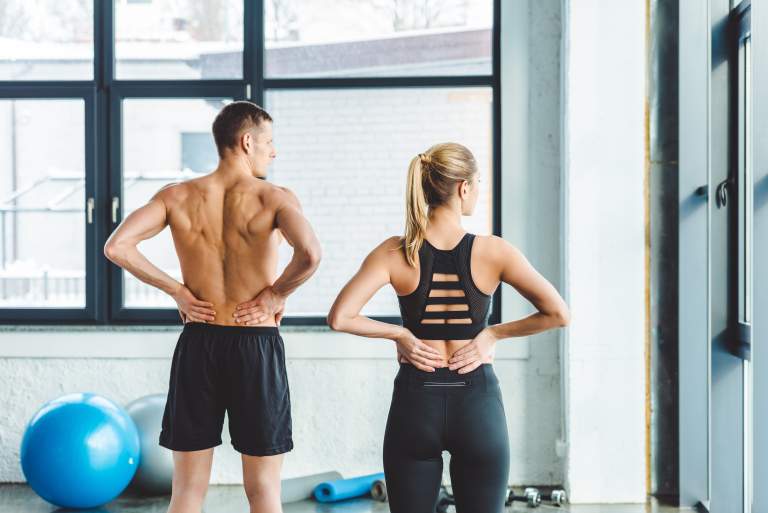Supersets are an excellent way to add intensity to your workouts, increase training volume, or simply save time. They can help you build muscle, develop strength, burn fat, or just save valuable exercise time. So, what’s a superset? Good question!
A superset involves doing two exercises back-to-back with little or no rest in between. By halving the amount of rest, you make sure you wring every last benefit out of your workouts – good news when many people often say they don’t have time for exercise. However, there are several different types of superset so make sure you use the right one for your goals.
With all superset variations, you complete all the repetitions for the first exercise, designated a), and then immediately do the second exercise, designated b). After completing the second exercise, rest for a moment and then repeat the pairing.
1. Push-pull supersets – also known as agonist/antagonist supersets, this method involves pairing opposing muscle groups together. This is a great time saver and also ensures that muscular balance is achieved – an important functional and aesthetic consideration.
Also, push-pull supersets promote faster recovery. As one muscle works the other is gently flexed and stretched which promotes increased blood flow and faster removal of fatiguing waste products. This makes it ideal for building muscle. Examples of push-pull supersets include:
- a) Leg extensions
- b) Leg curls
Or
- a) Biceps curls
- b) Triceps extensions
Or
- a) Bench press
- b) Seated rows to chest
2. Upper body-lower body supersets – this method is great for fat burning and provides an indirect cardio workout too. Simply pair an upper body with a lower body exercise and move quickly from one to another. Good examples include:
- a) Lunges
- b) Press-ups
Or
- a) Deadlifts
- b) Pull-ups
Or
- a) Leg press
- b) Bench press
3. Same muscle supersets – volume is an important part of hypertrophy or bodybuilding training. Doing same muscle supersets means your muscles will have to work for twice as long as normal which could produce greater muscle size as well as resulting in a wicked pump! On the down side, fatigue will mean that you will not be able to use as much weight in the second exercise compared to when you perform it alone.
- a) Leg press
- b) Lunges
Or
- a) Dumbbell bench press
- b) Press-ups
Or
- a) Shoulder press
- b) Push-press
4. Pre-exhaust supersets –in any exercise, there is a weak link that will stop you working as hard as you want to. Inevitably, this will be a smaller muscle that is part of the exercise but not the actual target. Pre-exhaust supersets are designed to preferentially fatigue the main working muscle so that the weaker muscle that normally fails first remains fresher for longer. Simply choose an isolation (single joint) followed by a compound (multi joint) exercise for the same muscle group. For example:
- a) Pec deck
- b) Bench press
Or
- a) Straight arm pulldown
- b) Lat pull down
Or
- a) Leg curl
- b) Romanian deadlift
5. Post-exhaust supersets – essentially the reverse of pre-exhaust supersets, post-exhaust supersets involve fatiguing the main muscle along with the weak link and then removing the muscle that has failed and continuing the set to beyond the point at which the set would normally have ended. To do this, simply choose and compound (multi joint) followed by an isolation (single joint) exercise for the same muscle group.
- a) Squats
- b) Leg extensions
Or
- a) Dips
- b) Dumbbell flyes
Or
- 1a) Overhead presses
- 1b) Front raises
6. Lazy supersets – true strength training using low reps and heavy weights is normally accompanied by lengthy rests between sets, 3-5 minutes not being uncommon. Needless to say, this means that workouts can end up lasting a long time despite the sets actually being very short and over in a matter of seconds. Lazy supersets involve pairing two dissimilar strength exercises together so that the long rest period can be used more constructively. Examples include:
- a) Squats
- b) Pull-ups
Or
- a) Deadlifts
- b) Bench press
Or
- a) Overhead presses
- b) Biceps curls
You don’t need to use supersets all the time but they are a very useful training system for both increasing workout intensity and saving time. The upper/lower body supersets are also a good albeit indirect form of cardio and good increased calorie burning. If you aren’t currently using supersets try them the next time you do biceps and triceps for a sleeve-busting pump you’ll undoubtedly love!












1 Comment
Comments are closed.